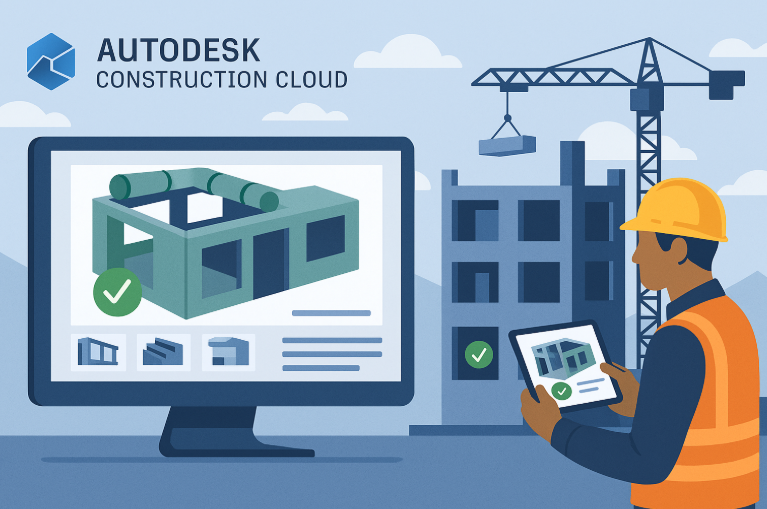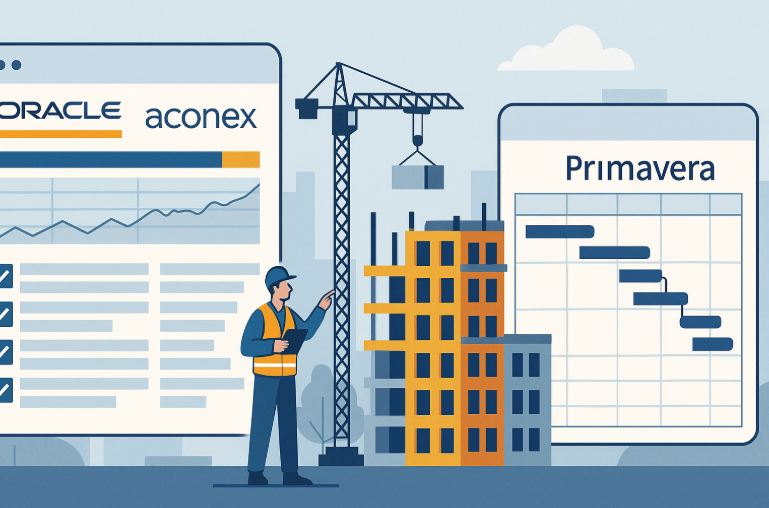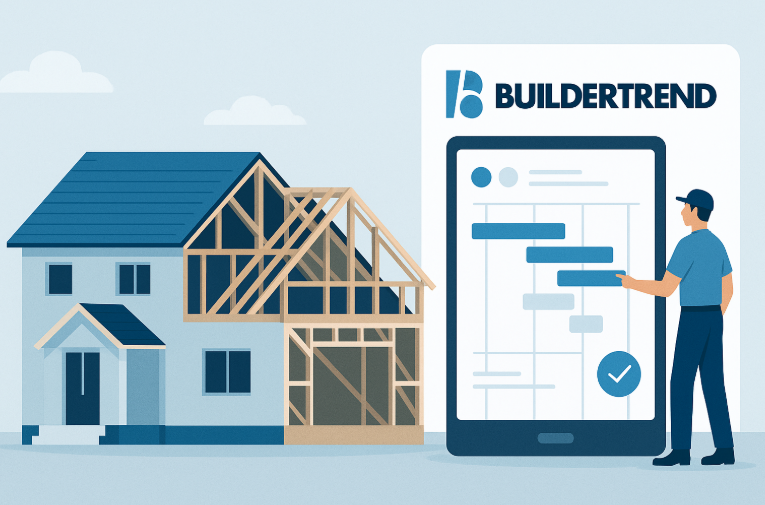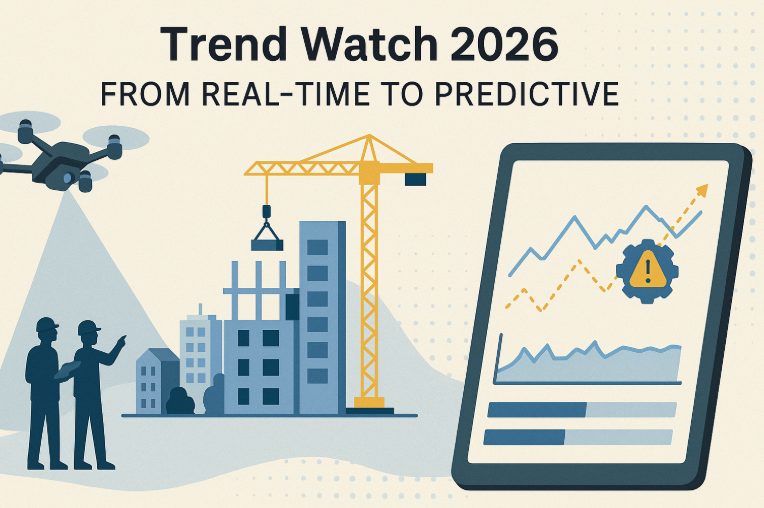5 Best Construction Progress Tracking Software Tools for 2026 (Tested & Rated)

Finishing on time remains construction’s biggest challenge. Miss a single inspection, and the critical path slips.
Lean practices—and real-time progress tracking—tilt the odds. A 2024 Dodge Data & Analytics study found that high-lean projects finish ahead of schedule nearly three times as often as traditional builds.
Over four months, we deployed five top progress-tracking platforms on active jobsites to see which ones keep crews, cost, and schedule in sync. The winners below show where each tool excels—and where it falls short—so you can choose the best fit for your next project.
How we tested & scored

We put each platform to work on a live, mid-rise commercial project instead of a demo environment. The goal: capture field-verified progress and see which tools kept crews, cost, and schedule in sync.
Our six-person evaluation team scored every product against five weighted criteria:
Progress-tracking accuracy – 30 percent.Without reliable field data, nothing else matters — having robust construction metrics reports available helps you monitor progress against timelines, assess resource allocation, and identify potential delays before they derail the critical path.
Ease of use and mobile speed – 25 percent. Superintendents must log updates in seconds, even offline.
Integration and collaboration – 20 percent. Smooth hand-offs between BIM, accounting, and the owner’s inbox save hours.
Project controls and analytics – 15 percent. Systems that connect percent-complete to earned value flag trouble early.
Scalability and support – 10 percent. A tool should grow with the portfolio and answer the phone when issues surface.
Each tester filed daily logs, attached photos, synced schedule tasks, and pushed cost data. While these platforms excel at project controls, roofing contractors might also consider a CRM for roofing business, such as ServiceTitan, to centralize customer interactions, job estimates, and marketing analytics — all from a unified system. We timed common actions, noted glitches, and gathered feedback from field and office teams. Finally, we averaged the scores using the weights above, then had our PMOs verify the methodology to keep vendor influence out.
InEight – integrated project controls for complex projects

High-stakes capital programs such as highways, refineries, and utility corridors create thousands of cost and schedule touchpoints. InEight unifies those data streams in one model, so teams can see in seconds whether crews are earning value or burning cash.
Field supervisors record installed quantities and labor hours in the mobile app, and the numbers post directly to earned-value dashboards with configurable rules of credit. Owners can slice progress by work package, WBS level, or funding source without exporting spreadsheets.
In October 2025, InEight released InEight Intelligence, an AI layer that pulls drone imagery and IoT feeds into a variance-risk score before issues reach the pay-app queue.
Industry data highlights the skills gap: 69 percent of organizations that finish on or ahead of schedule already use advanced project-control software, yet only 54 percent feel fully trained to exploit it. Budget for training and change management accordingly.
Smaller contractors may find InEight’s depth more than they need, and the interface favors function over visual shine. For megaproject owners and EPCs, though, its audit-ready history and integrated cost forecasting give lenders and regulators the transparency they expect, turning a tangle of spreadsheets into a single source of truth.
Procore – all-in-one collaboration hub

Picture a superintendent snapping a photo, adding one line of context, and watching Procore send the update to field, office, and owner before the concrete truck finishes washing its chute. That speed helps explain why, as of 2025, more than three million projects in 150 countries run on Procore’s cloud platform.
Behind the friendly interface sits depth. Drawings, RFIs, budgets, and schedule tasks live in one data model, so closing a wall pour automatically adjusts both cost commitments and float on the Gantt. The Helix intelligence layer, rolled out platform-wide in 2025, answers natural-language prompts such as “Show me trades holding up Level 4” and returns late RFIs, open submittals, and variance drivers in seconds.
Adoption is brisk. Procore lists 16,000 customers and 3.5 million monthly active users for 2024, and most crews learn the mobile app in a single walkthrough. Licenses are based on annual construction volume, while unlimited user seats let general contractors invite subcontractors and owners without extra fees, a plus when transparency appears in the contract.
Choose Procore if you manage several commercial jobs and need real-time visibility without heavy configuration. The platform turns everyday daily logs into live cost-and-schedule intelligence the whole team can act on.
Autodesk Construction Cloud – design & field in perfect sync

Autodesk earned its reputation with authoring software; Autodesk Construction Cloud (ACC) brings that heritage to the jobsite by keeping design data and field progress in one model. When a superintendent marks a duct install complete on a tablet, the 3D view updates instantly, with no exports or email chains.
Teams work in Autodesk Build, descended from PlanGrid and, as of 2025, used on nearly two million projects worldwide. More than 1.5 billion drawings live in ACC’s common data environment, so photos, punch-list items, and RFIs stay pinned to their exact plan location.
Because ACC reads Revit, Navisworks, and AutoCAD natively, design changes flow straight to the field, and clash checks run inside the same workspace. The top 300 ENR-ranked general contractors that use at least one ACC product report less rework, while schedulers can import a Primavera P6 or MS Project file once, then track percent-complete against activities in Build. Dashboards flag slipping tasks days before milestones.
Cost control is the gap. Change orders and commitments exist, but most contractors still pair ACC with an ERP for earned-value precision. Licensing may feel fragmented because Build, Docs, and Coordinate carry separate SKUs, so map roles before rollout.
Choose ACC when model-to-field continuity is critical. Hospitals, labs, and high-rise towers gain a single, living source of design truth while crews stay informed and progress stays visible.
Oracle Aconex + Primavera – enterprise control for megaprojects

Cross-border infrastructure, PPP concessions, and joint ventures often mandate Oracle’s one-two punch: Aconex for document governance and Primavera P6 for critical-path scheduling.
Aconex stores every drawing, RFI, and approval in an unalterable audit trail, while Primavera manages schedules thousands of activities deep. The link is live: each field inspection logged in Aconex Field updates the matching P6 activity, so progress variance appears without manual re-entry.
Scale is proven. A 2024 Oracle data sheet lists six million users collaborating on more than US $1 trillion of project value in 70 countries through Aconex. Primavera P6 supports tens of thousands of users engaged in millions of activities across global portfolios.
Setup is heavier than cloud-native rivals. Firms usually assign a dedicated scheduler and adopt strict naming taxonomies, and pilots run eight to twelve weeks before full rollout, according to Oracle partner case studies. The payoff is lender-ready transparency that satisfies regulators, sureties, and claims consultants.
New integrations, such as AI Clearing’s drone-based progress verification, compare site imagery to the baseline schedule and flag slips early, reducing forensic review later. For mega programs where multi-party accountability is essential, Oracle’s stack delivers the governance and defensible history stakeholders expect.
Buildertrend – progress tracking built for home builders

Buildertrend keeps residential projects moving by turning everyday updates into shared context. A superintendent drags a framing task forward on the Gantt, and every subcontractor receives a push notification before closing the app. Homeowners open their portal, see fresh photos, and avoid phone calls for status.
The metrics tell the story. As of 2024, one million construction professionals have used Buildertrend to complete more than two million projects in over 100 countries. Field crews snap pictures, dictate notes, and the app records weather automatically. The result is a daily report that stands up when rain delays framing. Budget and schedule views refresh in real time, so builder and client can track percent-complete against spend.
Transparency continues through payments. Clients approve change orders in one tap and pay online, which speeds cash flow and reduces email threads. Buildertrend does not calculate critical-path logic or earned value, so large commercial general contractors will outgrow its reports. For custom homes, remodels, and specialty trades where speed, clarity, and client experience matter most, Buildertrend delivers.
Which tool fits your project?
Match each platform’s strengths to the size and risk profile of your job, then review the deep-dive sections for nuance.

Legend: ✔️ Ideal ➖ Works with caveats ✖️ Not recommended
Tip: If your annual construction volume is under US $10 million, start with Buildertrend or the lower-tier Procore plan. Above US $100 million, InEight or Aconex + P6 usually meet the project-control standards lenders and auditors expect.
Trend watch 2026: from real-time to predictive

The next competitive edge is not knowing what happened yesterday; it is spotting trouble days in advance. In Autodesk’s 2025 State of Design & Make survey, sixty-eight percent of construction executives still believe AI will improve project delivery, even after a fourteen-point dip in overall AI optimism year over year.
Reality capture is closing the feedback loop. Dodge 2024 research shows that more than seventy percent of contractors who already use drones, laser scanning, or wearables say these tools improve site safety and quality. A midday drone or 360-camera flight can upload a point cloud before the afternoon huddle, letting software flag misplaced embeds while concrete is still wet.
Cost and progress data are converging as well. Tools for predictive project controls, such as construction management software from InEight, already combine earned-value data with AI-driven insights to forecast cost and schedule risks before they surface. Procore’s 2025 How We Build Now report found that fifty-five percent of firms expect AI automation to reshape cost-control workflows within five years. New dashboards link percent-complete to live budget drawdown, creating an earned-value snapshot that even non-financial teammates can act on in real time.
Conclusion
In 2026, the best construction progress-tracking software doesn’t just report what’s happening—it predicts what’s next. Platforms like InEight and Oracle Aconex + Primavera bring enterprise-grade project controls to massive programs, while Procore and Autodesk Construction Cloud offer real-time collaboration that keeps commercial teams aligned. Buildertrend remains a clear favorite for residential builders who prioritize speed and client transparency.
Choosing the right tool comes down to project scale, data maturity, and team capacity. A robust earned-value dashboard means little if superintendents can’t update it easily in the field, while a fast mobile app loses value if it can’t forecast risk. The top performers combine both: accurate progress capture and intelligent analytics that surface delays before they impact the schedule.
As predictive AI and reality capture mature, expect 2026’s leaders to move from real-time visibility to real-time foresight—helping builders not only track progress but actively steer it.
Frequently Asked Questions
1. What is construction progress-tracking software?
Progress-tracking software helps contractors monitor jobsite activity, record percent-complete, and link field data to cost and schedule updates. It replaces manual spreadsheets with real-time insights so teams can make faster, data-driven decisions.
2. Which tool is best for small contractors?
For firms with under $10 million in annual volume, Buildertrend or Procore’s lower-tier plans provide the best balance of ease, affordability, and client communication tools.
3. What if my projects use BIM models?
Choose Autodesk Construction Cloud. Its native Revit and Navisworks integration ensures that model changes instantly reflect in field progress, preventing rework and design miscommunication.
4. How do enterprise owners handle massive, multi-party projects?
Large-scale infrastructure or PPP concessions typically rely on Oracle Aconex + Primavera, which combine strict document governance with powerful critical-path scheduling and earned-value tracking.
5. Can AI really predict schedule delays?
Yes—emerging AI layers like InEight Intelligence and Procore Helix analyze field photos, IoT data, and schedule variance to flag risks early. While still evolving, predictive analytics already reduce reactive firefighting on many major projects.



